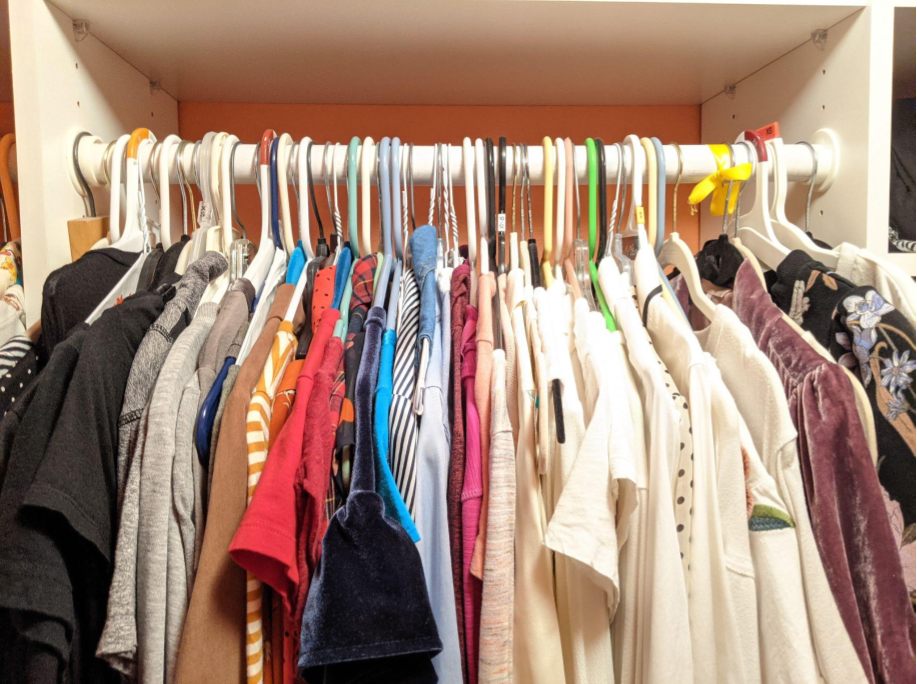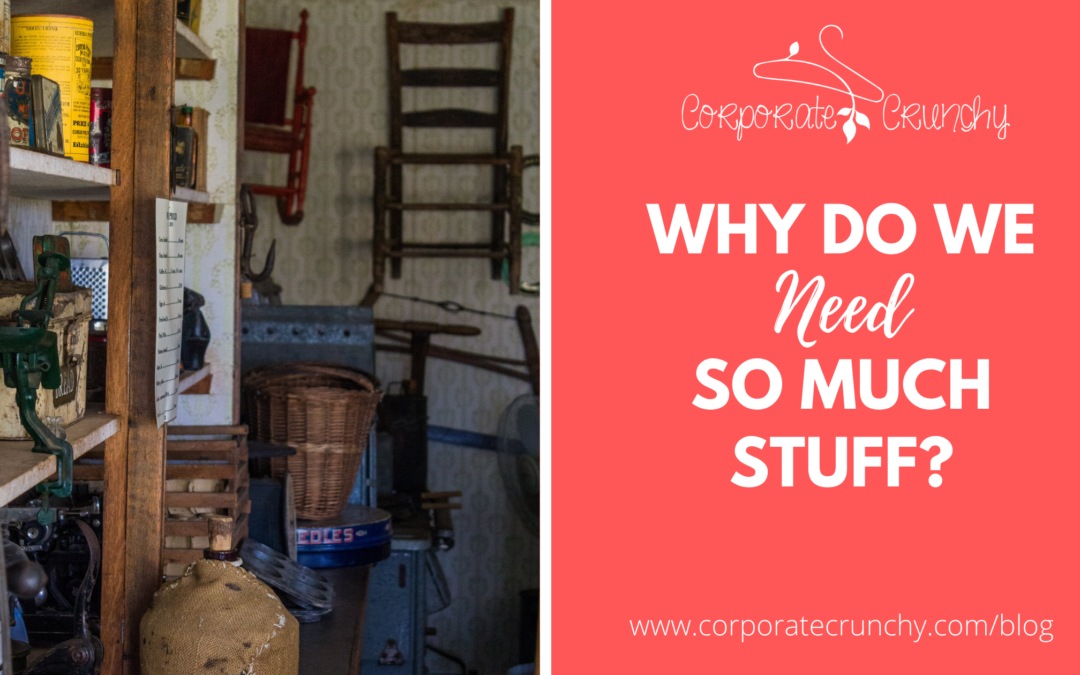Recently I was scrolling through Netflix, looking for a new show to watch, and I came across the show Hoarders. In case you haven’t heard of it, the show features people who suffer from Hoarding Disorder, which is defined by the Mayo Clinic as “..a persistent difficulty discarding or parting with possessions because of a perceived need to have them. A person with hoarding disorder experiences distresses at the thought of getting rid of items. Excessive accumulation of items, regardless of actual value, occurs.” As soon as I started watching this show, I couldn’t look away. My husband didn’t understand why I would watch such a thing. I mean, I get it. Why would I waste my time with such “reality” TV? After reflecting on it a bit, it’s really the psychology of it that fascinates me the most – the irrationality of the acquisition of stuff that we don’t need. Why do we do it? Why do we need so much stuff?
Most People Like to Acquire Stuff
The show “Hoarders” obviously takes a look at the most extreme cases of acquisition because that is what gets us to tune in. A person with hoarding disorder will often have a serious relationship and health struggles as a result of this compulsion. But, what about the average person? Why do we choose to acquire the things that we do? Consider your last purchase. Was it something you really needed? Say, for example, groceries. Or, was it something that you just wanted. Such as a new purse even though you have several that work very well. Now, the point of this post is not to shame anyone for liking to buy nice things, Most of us do. The point is to really explore our motivations and how to think more consciously about what we acquire.
Let’s Take a Look At Our Closets
Since I like to write about conscious and sustainable fashion, let’s explore this topic of why we need so much stuff by taking a look at our closets. Do you have a sense of how many articles of clothing you own? Of those items, could you estimate what percentage of those clothes that you actually wear? I’ve seen some experts say that we only wear about 20-30% of the clothes that are in our closets. If that’s the case, why do we have all the other items, and why can’t we seem to get rid of it? Until recently, I was one of those people who did not wear most of the clothes in their closet. I’ve slowly and methodically been working to change that. You can read a little more about my process in my Conscious Closet Cleanse Part I and Part II blog posts. (Part III coming soon!)
If you’d like to have a closet filled mostly with clothes that you WANT to wear, there are a few different ways to really get in touch with what’s in your closet and what you will actually wear. I find that the first best step is to take an inventory of what you have. It doesn’t have to be super detailed. You can use a spreadsheet or just a notebook to capture what you currently have. Create rows for major categories such as tops, jackets, pants, skirts, dresses, sweaters, etc. Then just take a basic count and add it up. Does the number shock you? I was definitely shocked the first time I did this. Here’s an example of my spreadsheet over the span of about a month.

How Much Do You Actually Wear?
Okay, so you know how much you have. That’s a great first step! But what really matters is how much of it do you actually wear? If you wear most of the clothes that are in your closet, GREAT! But if not, there is a chance that you are acquiring those clothes for some unconscious or irrational reason. Maybe it was a great deal. Or you bought it on vacation and it has sentimental value. It could even be something you acquired as a status symbol, i.e. designer bag.
A simple way to figure this out is to literally pull out all the clothes that you know you’ve worn in the last year and put them in one section of your closet. The opposite can also work. Meaning, pull and set aside all the things that you KNOW you haven’t worn in at least a year. Take a count and figure out the percent that you actually wear. (For additional ways to sort what you wear vs. what you don’t, check out my blog post about the Best Time To Clean Out Your Closet.

The “ribbon test” is a great way to learn what you do and don’t wear. After you wear and was something, put it back on the right side of the ribbon. After a while, everything that remains on the left is stuff you don’t or rarely wear.
By now you should have a rough number of where you are with your worn vs. unworn clothing. But knowing that number is probably not enough to get you to make changes in how you acquire and keep things. Why DO we need so much stuff? Keep reading and we’ll start to get to the heart of the matter.
Time To Take a Hard Look At Things
Now that you have gotten in touch with the reality of how many clothes you have hanging in your closet, and how much of it you actually wear, it’s time to really consider why you have so many clothes that you do not wear. Here are a few questions I asked myself that might also work for you:
- Who was I with when I bought this? Did it influence my decision to purchase?
- Would I have proactively sought out this item if I had never stumbled across it in the first place?
- Did I only buy this because it was a “great deal” even though it doesn’t fit or isn’t my style?
- Did you purchase the item because you felt you “deserved it” or as a reward?
Again, the aim here is not to pass judgment on anyone’s decisions. Even as someone who blogs about conscious and sustainable fashion, I find that sometimes I purchase something that later I scratch my head over. Wondering, “what was I thinking when I bought this?”
Are We Possessed?
In the book “Possessed: Why We Want More Than We Need” by Bruce M. Hood, the author explores this whole idea of possession and acquisition. So, why do we need so much stuff? Goodreads sums it up this way, “[Possessed] reveals how we are compelled to accumulate possessions in a relentless drive to seek status and approval by signaling our values to others by what we own. It traces the history of ownership but looks to the future as our drive to own will need to adapt to environmental and technological change”
As we consider the future of the planet and the environment, there are some very simple things that we can do to save money, reduce waste and reduce our carbon footprint.
Making the Most of What You Have
Most experts in the sustainability or green movement will tell you that we cannot acquire our way out of the environmental crisis we’re facing. Even if you are not a believer in man-made climate change, just consider the very real cost of disposing of our unwanted items. In “The Waste-Free World: How the Circular Economy Will Take Less, Make More, and Save The Planet” author Ron Gonen outlines a very compelling case.
You see, the trash we throw out has to go somewhere. Often cities and communities will ship our garbage out of state, at a huge expense to taxpayers, because we’ve run out of room for our own trash. Using and acquiring less, as well as recycling and repurposing existing items are some ways to help reduce this excess garbage we’re throwing out every day. Here are a few things that you can do NOW, starting with your own closet.
- Shop Your Own Closet – Make new outfits out of pieces you already own. To learn how download my 6 Ways To Shop Your Closet Guide
- Shop Secondhand – Don’t let anyone tell you that thrift stores are being overrun by rich folks and resellers. There is PLENTY to go around. More than plenty, actually. Thrift and charity stores still throw away a lot of unwanted and unsellable clothing. New to thrifting? Check out the blog post on 5 Tips If You’re New To Thrifting
- Choose to repair or remake items you already have instead of chucking them. I recommend you start following the hashtag #visiblemending for repair inspiration. I also recommend that you follow my friend Crispina ffrench. She teaches people how to make beautiful potholder rugs using unwanted textiles. You can find her at www.crispina.eco.
If you decide your entire closet is a lost cause, check out my Checklist for Creating a Sustainable Wardrobe on a Budget so you can build a closet full of clothes that you love to wear, while reducing your carbon footprint, and saving money.


Thanks for the plug Angelique. I love what you are doing here and wish you great success. Together we can make global shift in textile waste.